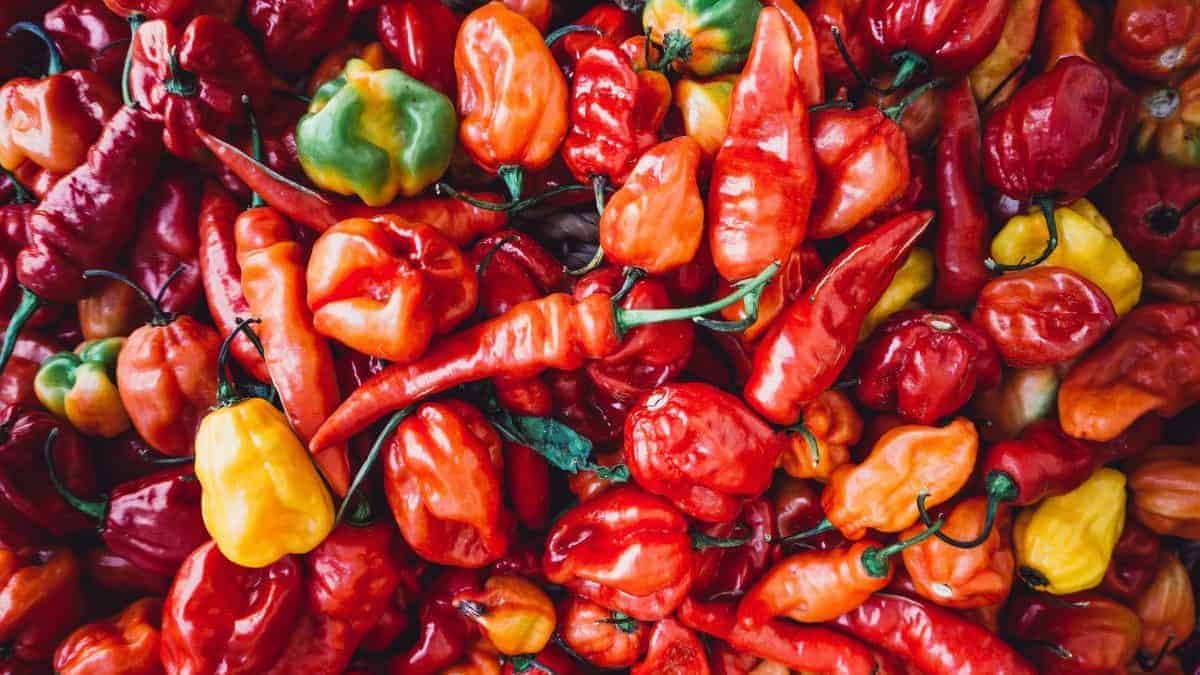Not everyone likes spicy food; not everyone can take the heat. Actually, no one should like that burning sensation — it’s the plants’ way to tell us to back off. Then, why do we find spiciness so attractive?
Easy, getting overwhelmed by hot food is exhilarating; our body releases endorphins, the happy hormones, and we fell a rush as we blush and break a sweat. Isn’t that fun? It’s like riding rollercoasters.
To further embrace hot peppers, we should know them intimately, so here’s all you need to know about hot peppers.
1. How do you measure the heat of a hot pepper?????
In 1912, Wilbur Scoville invented the Scoville scale to rank chili peppers’ spiciness. He diluted the peppers until a random group of tasters could not feel the heat anymore. A number is then assigned to each pepper in SHU or Scoville Heat Units and represents how many times a hot pepper has to be diluted until tamed.
While a mild pepper, like jalapeño, has to be diluted 1,000 times, habanero peppers need to be diluted 350,000 times to lose their heat! And the spiciest pepper on earth, Pepper X, needs to be diluted 3,180,000 times! That’s a sure trip to the hospital right there.
2. Hot Peppers are ALL Mexican! ????????
We’re sure you’ve tasted spicy food from all over the world. Indian food can be incredibly spicy, and North African countries like Morocco and Algeria love hot peppers too. Southeast Asian food like the one found in Vietnam and Thailand can be fiery, but all papers came from the same place: Mexico.
It was the Portuguese on their endless commercial travels around the world who made sure hot peppers reached every corner on earth. Actually, hot peppers are called peppers because Europeans found their pungent taste similar to black peppercorns, the hottest spice known back then.
3. What makes a hot pepper, HOT?????
Hot Peppers are spicy because of a compound called capsaicin. The more capsaicin in the chili pepper, the spiciest it is. Interestingly enough, not all animals react to the chemical compound; only mammals, like humans, can feel the heat.
Birds can (and often do) eat chili peppers without breaking a sweat, and there’s a good explanation for that. Evolution made birds resistant to heat because they’re the ones in charge of spreading chili pepper seeds around. Mammals are not welcome. If the bright red color isn’t warning enough, it just takes a small bite of a berry (yes, berries) to make any predator drive away.
4. Bell Peppers VS Hot Peppers?
Bell Peppers are peppers too, but they have no capsaicin, they’re ranking in the Scoville scale is zero. Being not spicy is not bell pepper’s most unusual trait. You’ve probably seen green, yellow, red and even purple bell peppers, well they’re all one and the same.
The difference between the color of bell peppers is their stage of maturity. And it’s not only the color, ripe bell peppers (the red ones), are sweeter. Green bell peppers, though, are crunchier.
5. Hot Peppers as Weapons ????
Pepper spray, the self-defense and crowd control substance, is not made with piperine from black pepper, as most people think, but with hot chili peppers’ capsaicin.
Pepper spray is almost pure capsaicin and ranks a whopping 2,000,000 to 5,000,000 in the Scoville heat scale. There’s a lesson to be learned here — don’t cook with pepper spray.
Spice up your life!
Hot Peppers are not only spicy, but they’re also delicious. They can add sweet notes to food too and increase the flavor intensity of any dish. Use cayenne, pepperoncini, or fiery habanero, but spice up your food a little.
The best part? Humans can build resistance to heat, and you know that’s a skill you want to be better at.

